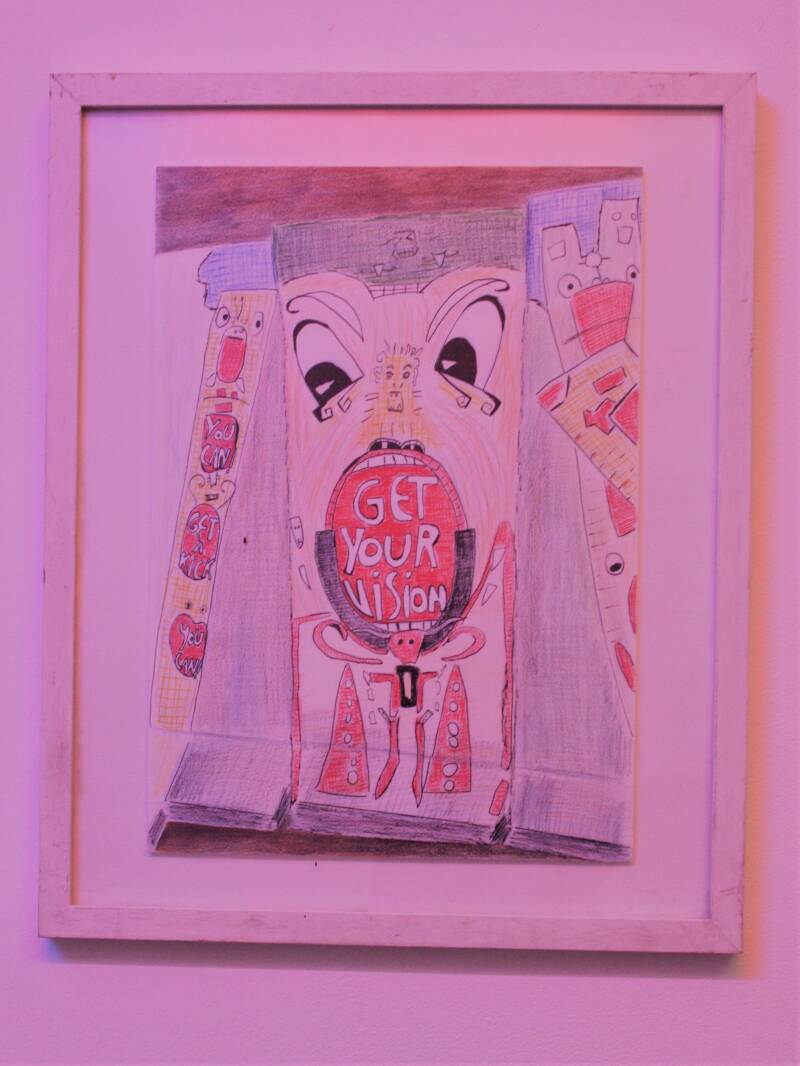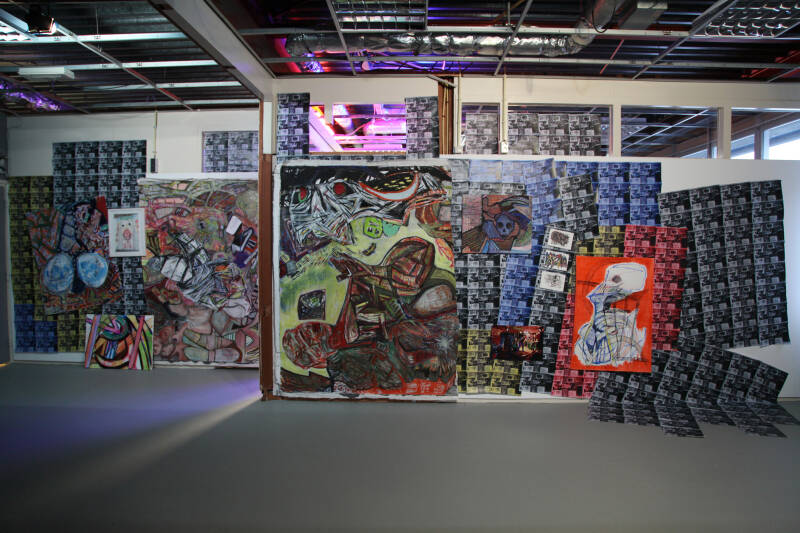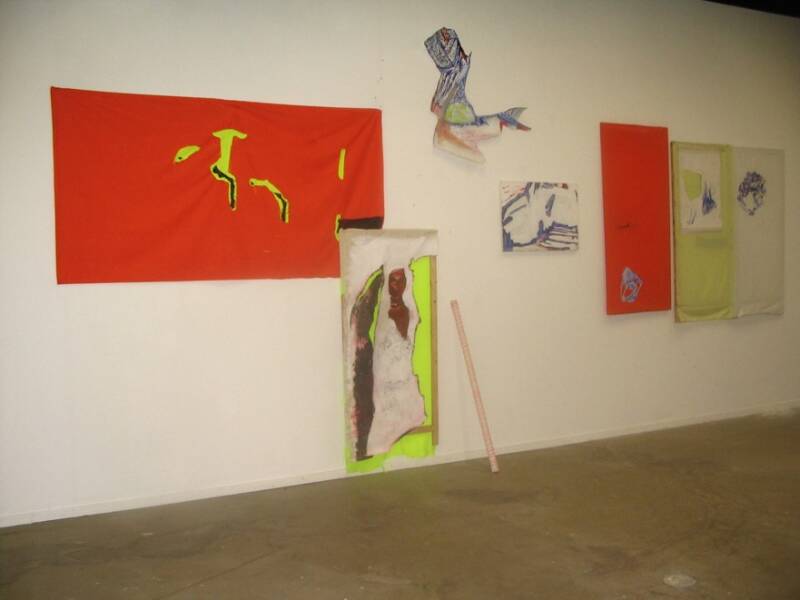
Get Your Vision
Get Lost in the Unknow * Trust the Adventure
Get Your Vision, een project van 2005-2013, waarbij ik tijdelijke installaties creëerde in projectruimtes.
De installatie was per locatie verschillend en bestond uit schilderijen, fragmenten van schilderijen, tekeningen, muurschilderingen, foto’s, prints, video, geluid en licht. Om zo een totaalervaring, energie, neer te zetten waarin de toeschouwer werd overweldigd en meegenomen.
De schilderijen werkte ik vaak weer verder uit in mijn atelier. Door stukken uit te snijden, toe te voegen, en/ of verder uit te werken net zolang, totdat er ongrijpbaar beeld ontstond.

De Nederlandsche Cacaofabriek, Helmond 2013

Nest, Den Haag 2011

Ruimtevaart, Den Haag 2011

TAC, Eindhoven 2006

Villa Ockenburg, Den Haag 2006
Get your vision
After a while of looking around in one of Sarina Missots overwhelming hallucinations of lines, color and movement you increasingly see that you are not surrounded by chaos. There is structure and direction in these spatial installations of video, drawings and paintings that may at first sight seem erratic. But the experience you're in has no beginning or ending. Wander around, let yourself get pulled around by all the visual impulses. Imagine an unrestrained theatre, a show by freaks and free spirits that consumes you. Colored light and a thundering drone surprise you, yet there is such freedom and this grand lust for life that you gladly surrender yourself to it. There is so much to discover that you want to keep wandering, looking, experiencing.
Something like this is what Sarina Missot feels when she is working. Blue and red seamlessly melt into the funk rock she plays and the exuberant spectacle in her mind. She wants to get carried away by her work, but she also wants the viewer to be overwhelmed by giving him a similar experience abundant in colors, patterns and visual effects. She also makes the spectacle from her mind more explicit by adding film and photos she took at punk rock ‘n’ roll shows, or even by hosting actual performances with the work. Walls, ceiling: everything seems to enter the space, all is warm-blooded and alive.
Missot grew up in a house full of batiks, masks and wajang dolls. Her mother was born on the island of Java and taught ‘folk painting’. This heritage laid the foundation for a broad, also non-Western look on things. The impulsive way of drawing Missot had as a child, at art school turned into a more deliberate choice for following impulses. She took on an intuitive approach which is regularly paused for contemplation. She lets herself get swept by what she sees and feels whilst working, but invariably she takes a moment to critically study what she has formed. And that in turn leads to a response, often in a constructive form of destruction: tearing, cutting or overpainting. Some pieces disappear, others, combined with something old, are given a new role. In this way Missot works on several things at a time for in some cases years on end. The titles she gives reflect this. Pieces that are closely connected, like the ones in the series Get Your Vision, all get the same title. Only the years that follow it are changed.
What is presented in the end is not necessarily a static whole, since she constructs the works out of pieces of paintings in combinations that change with every location. A clear and 'finished' result is not something Missot is looking for. Surely beauty can seduce for a moment, but it doesn't hold your attention like something that has lived. Like a visible struggle of some duration with form and material.
The work calls upon the viewer to actively see, to be open to visual impulses. Get absorbed, walk back and forth, look around as though you just discovered vision. Missot does not impose a message or certain specific associations, there is no symbolism to figure out. Her experiences are not necessarily yours. Anything you think or feel is fine. As long as you experience something.
Skulls are one of the few recognizable and recurring elements. Recently skulls, from a meaningful symbol, have turned into an airy motif on clothes. But for Missot it is still a very rich symbol that does not necessarily represent only death. It is where your entire identity, all your feelings and thoughts are formed. So skulls may also represent life and the abundance of possible experiences.
But like I said: you might pick up something completely different. A space filled by Missot is a refuge, a free and vivid theatre in which you have a part.
Lynne van Rhijn, 2013